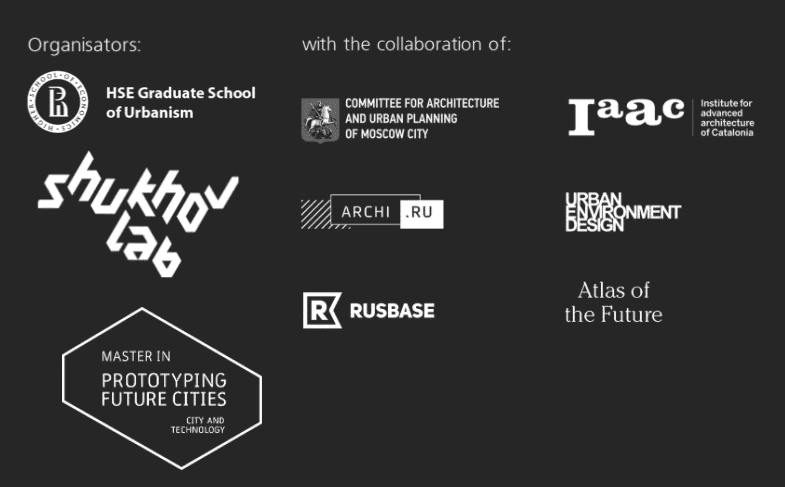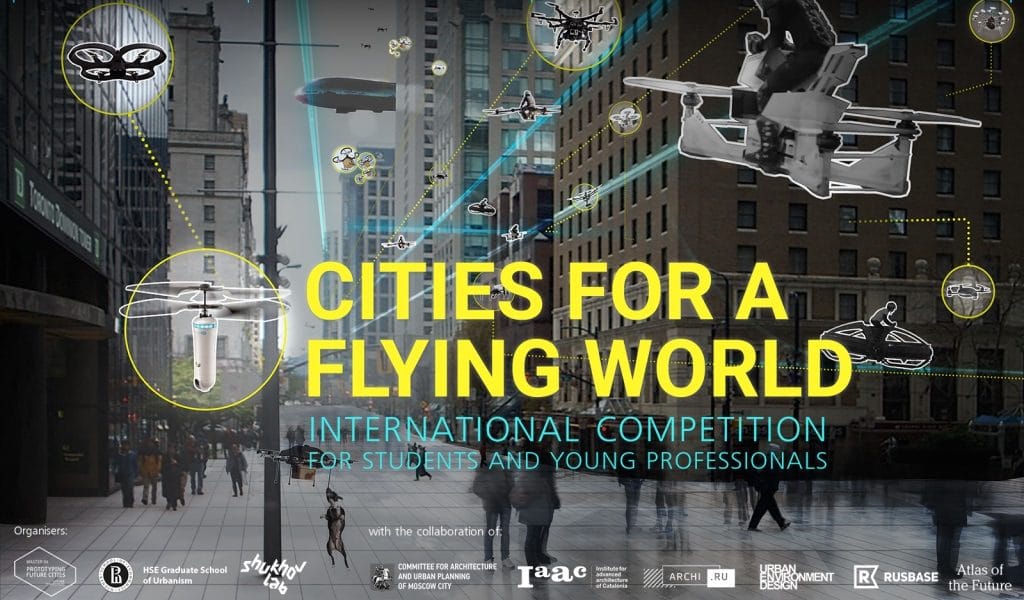What do Uber flying cars, Hoversurf drone taxis, Amazon’s giant mothership zeppelin, the Soviet city in the sky and these visions of high-elevation life have in common?
Apart from being visionary proposals that are hard to distinguish from science fiction, they are also inspiration for ‘Cities for a Flying World’ – an international competition launched in May 2017 by Shukhov Lab (from the HSE Graduate School of Urbanism in Moscow). It asked you to take a look at how flying technologies will change the way we work, live and play in the city.
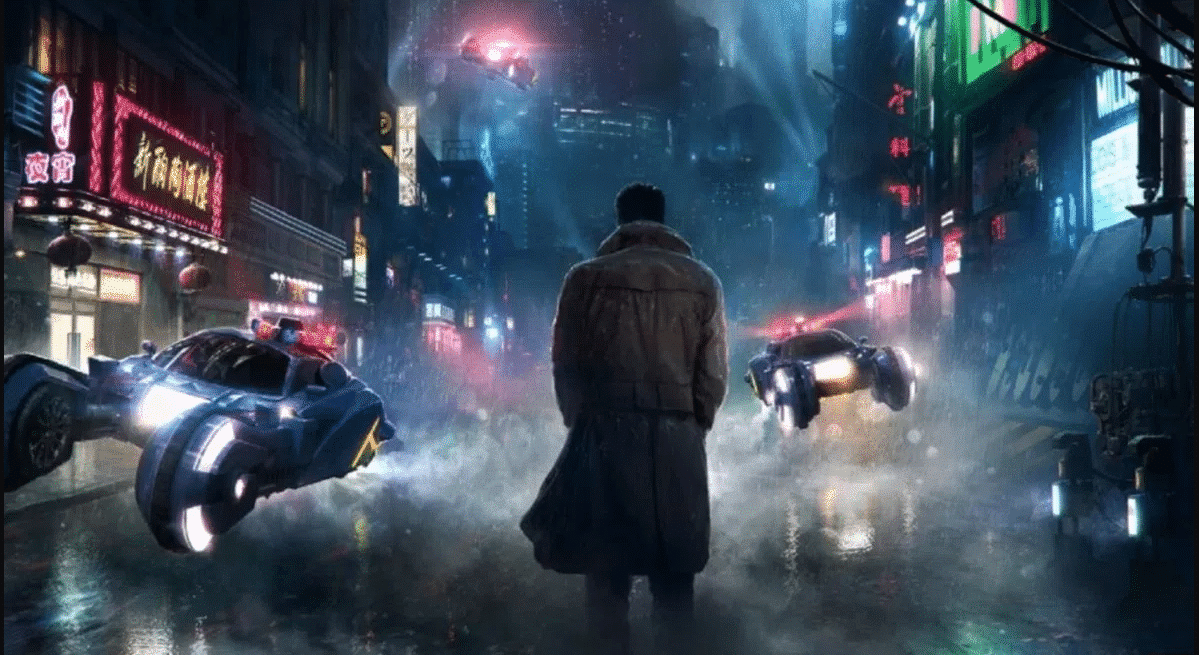
Blade Runner 2049
In the cult 80s film Blade Runner, the city of Los Angeles of 2019 sees Spinners fly above streets clogged with people – and Blade Runner 2049 has its own fleet of badass futuristic cars.
But what will cities really look like when citizens have flying vehicles? Can buildings be built from the top down? How will life be improved in poor neighbourhoods by drone technology? How could new modes of vertical transportation impact the development of cities? Could there be aerial zeppelin communities and how will they be organised?
The competition:
We’re proud to be part of the team who asked these questions in the competition that celebrates the launch of the New Masters programme ‘Prototyping future cities: city and technology‘ from the Shukhov Lab for Prototyping Future Cities, Moscow. The contest was open to architects, engineers, planners, designers, students and experts from any discipline who wanted to contribute to progress in making the world more habitable – by developing ideas that could change the way we design, build and live in cities. It is so important to think about the informal city and what flying technologies could do for these areas, not just have a super high-tech and elitist view of progress.
The contest got off to a flying start (sorry) in May with design proposals for a new city, building, device, social platform or all of the above. 633 young students and professionals from 78 countries registered and let their imaginations fly. 93 projects from 26 countries were submitted and the winners have just been announced. (See the full list of international jury at the end.)
The winners:
Third place was awarded to Audrey Chan from the United Kingdom. Her ‘Aerotopia’ was inspired by capitalism and the possible energy crisis that will happen in the near future.
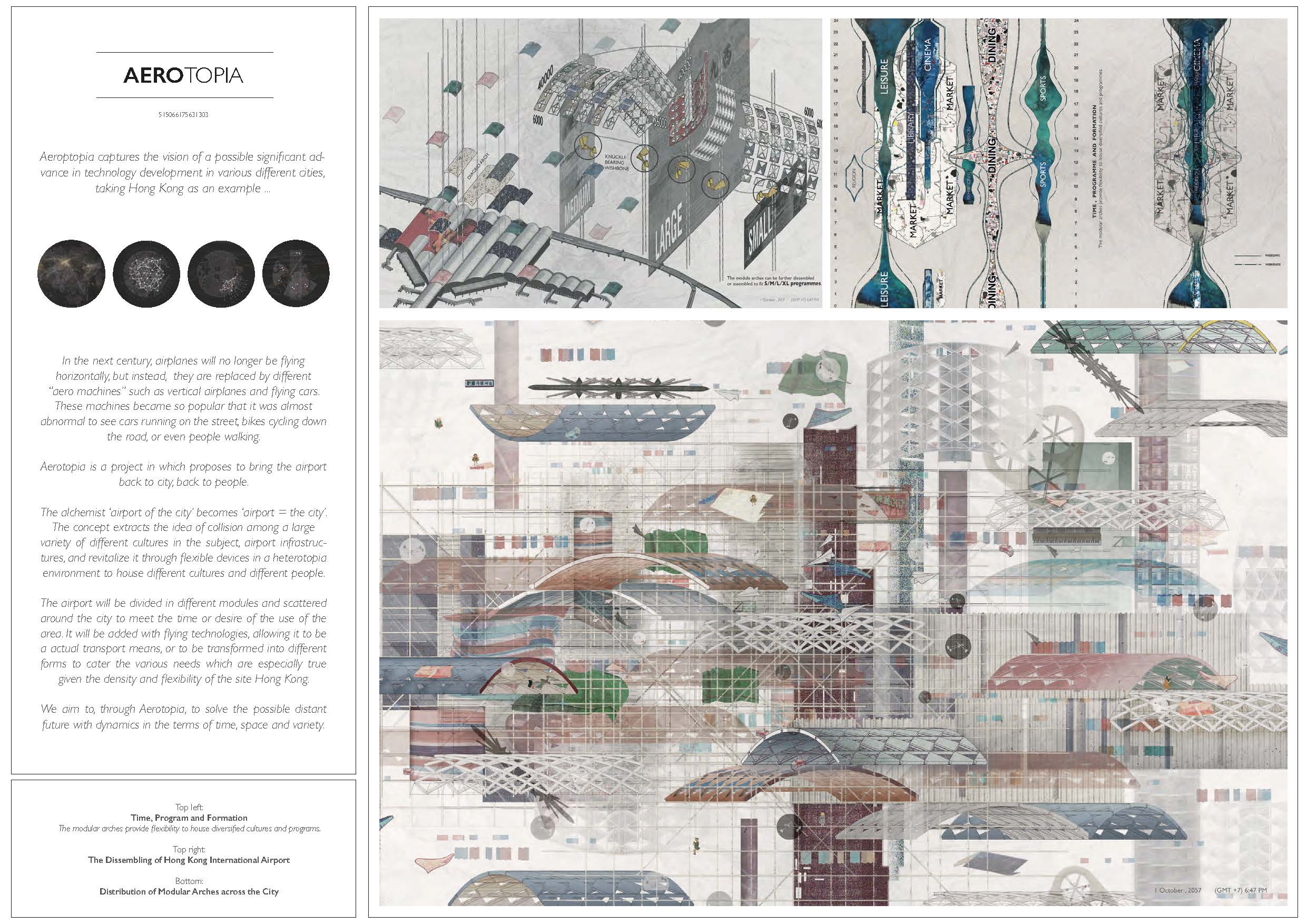
Second place went to computational designer Honghao Deng and speculative designer Jiabao Li from the United States with ‘Twinkle’ – their “luminous transformative creature that lives on light posts”. The aerial fireflies are curious, playful and attracted by human activities. During daytime they rest, expanding their solar panels for charging. At night, they interact with individuals to improve urban safety without surveillance. Both Honghao and Jiabao are doing a Masters in Design Studies in Technology in Harvard University Graduate School of Design.
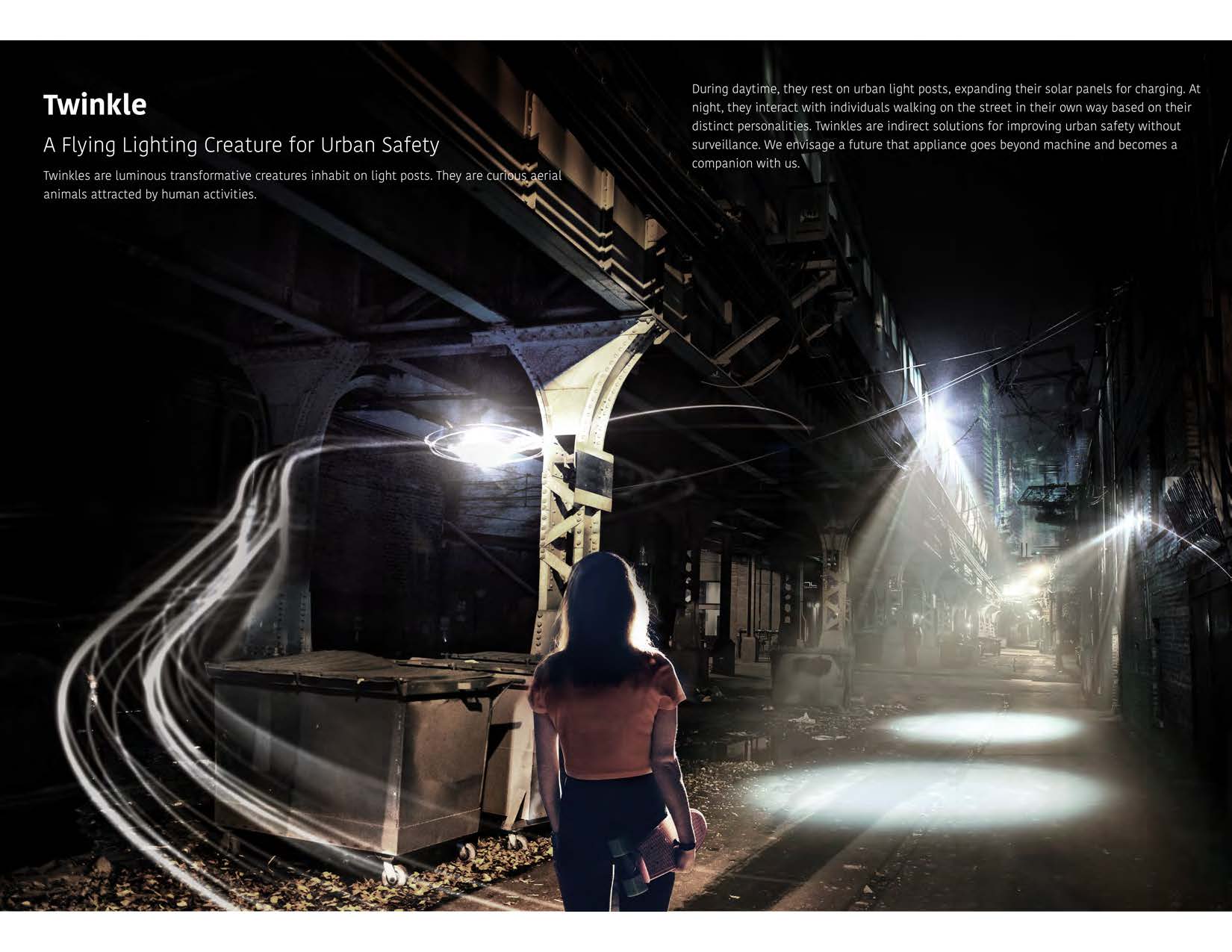
A massive congratulations to He He and Yufan Chen, who got first place. The Architecture majors at Zhejiang University of Technology in China took inspiration from aircraft as the main vehicles in the city of the future. In their ‘Spheri City’ we can enter buildings from all directions.

The international jury:
Silvia Brandi – Barcelona, Director of Communications and External Relations, IAAC MAA Senior Faculty, Ali Basbous – Beirut, Founder and Director of Building by Associative Data, Xavier de Kestellier – London, Head of Design Technology and Innovation ‘Hassell Studio’, Vicente Guallart – Barcelona, Director of a Shukhov Lab, Former chief architect of Barcelona 2001-2015, Daniel Ibanez – Boston, Architect, Harvard GSD, Urban Theory Lab, Sergey Kuznetsov – Moscow, Chief Architect of Moscow, Matthias Kohler – Zurich, Professor of Architecture and Digital Fabrication ETH, Greg Lynn – Los Angeles, Architect, Head of ‘Greg Lynn FORM office’, Ar, Professor of Architecture, Yang Lei – Beijing, Industrial designer, Joachim Mitchell – New York, Architect, Terreform One, Alexey Novikov – Moscow, Dean of HSE Graduate School of Urbanism, CEO Habidatum, Cathy Runciman – Atlas of the Future co-founder, Pati Nuñez – Madrid, Journalist, Writer, Curator and Communication Consultant ‘Pati Nunez Agency’, Matteo Robiglio – Torrino, Architect, Professor Politecnico di Torino and Jon Tugores – Barcelona, Jon Tugores + Architects, photographer and Vueling pilot.
